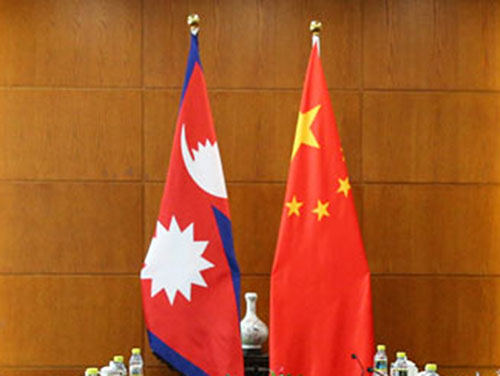Six agreements likely as prez visits China
Kathmandu, April 23
Nepal and China will sign a number of bilateral agreements, including the Protocol of the Nepal-China Transit Transport Agreement and pacts on Trans-Himalayan Multi-Dimensional Connectivity Network under the Chinese-led Belt and Road Initiative during President Bidhya Devi Bhandari’s nine-day state visit to the northern neighbour beginning tomorrow.
Bhandari’s is a first ever state visit to the northern neighbour by a Nepali president. She will lead a Nepali delegation to the second Belt and Road Forum for International Cooperation which kicks off in Beijing on April 25.
The major agreements to be signed during delegation-level bilateral meeting between Bhandari and Xi on April 29 include the protocol that will pave the way for the implementation of the TTA that was signed in March 2016 during Prime Minister KP Sharma Oli’s China visit.
The Protocol to the TTA has allowed Nepal to use Shenzen, Lianyungang, Zhanjiang and Tianjin seaports, ending Nepal’s sole dependence on Indian ports for overseas trade.
Similarly, the two sides will sign agreements on customs cooperation, on expediting Chinese-aided projects in Nepal, and on cultural property protection aimed at curbing illegal trade in artefacts, according to high-level sources at the Ministry of Foreign Affairs.
Nepal and China will also sign an agreement on boosting cooperation between Nepal Bureau of Standard and Metrology and Standardisation Administration of China. This agreement is aimed at boosting trade between the two countries.
Under the BRI, the forum will, on April 27, adopt a joint communiqué which will explicitly include projects in Nepal under the initiative, including those related to the Trans-Himalayan Multi-Dimensional Connectivity Network. The communiqué will also include upcoming projects on trade, transit and connectivity. “Inclusion of Nepali projects in the joint communiqué is important because this communiqué will shape the future of the BRI,” said the source.
Bhandari will address the third of the three high-level sessions on April 26 and present Nepal’s views on sustainable development. She will also take part in the leaders’ round table on April 27 and present Nepal’s views on BRI, how to move forward with the initiative and what are Nepal’s benefits and stakes.
MoFA sources said Bhandari’s China visit was important not only because it was a first state visit by a Nepali president, but also because top Nepali leadership was leading Nepal in the second BRI Forum. In the first forum, the then deputy prime minister Krishna Bahadur Mahara had represented Nepal.
“During the first BRI Forum, we were not in a position to negotiate or determining objectives and principles,” said the source. “But since the top leadership is leading Nepal this time, we are closely involved in the entire consultation process.”
Planned pacts
- Agreements on Trans Himalayan Multi-Dimensional Connectivity Network under the Belt and Road Initiative
- Protocol of Nepal-China Trade and Transit Agreement
- Agreement on customs cooperation
- Pact to expedite China-aided projects in Nepal
- Agreement on cultural property protection to curb illegal trade in artefacts
- Agreement on boosting cooperation between Nepal Bureau of Standard and Metrology and Standardisation Administration of China






